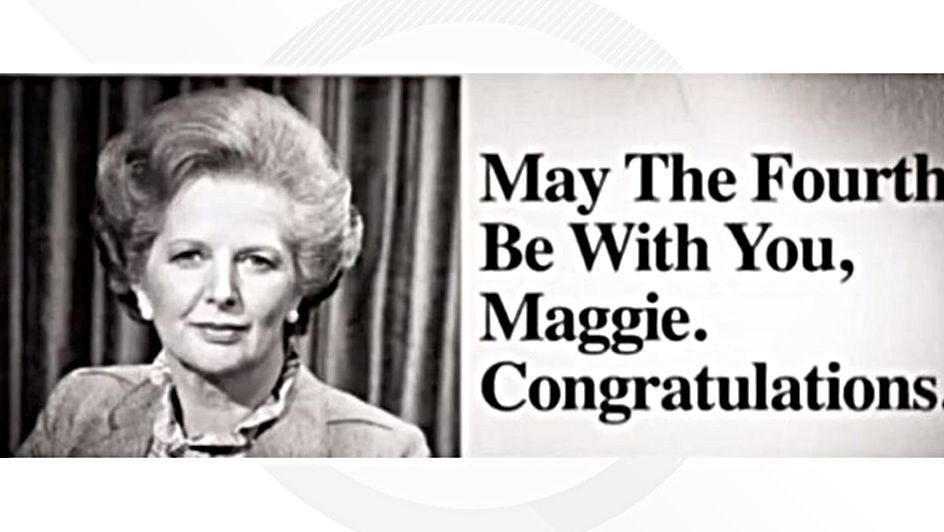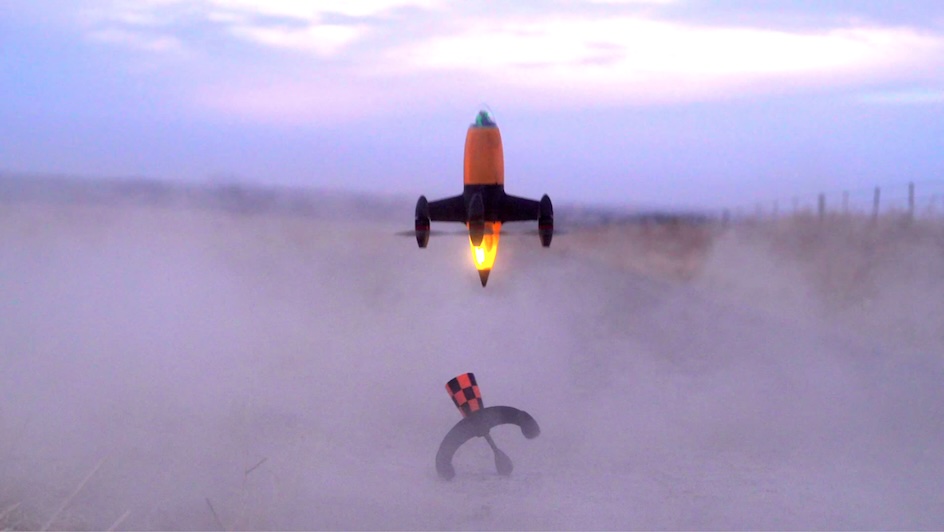#ThrowbackThursday – 4 May

May the 4th be with you because it’s Star Wars Day!
Unfortunately for “Star Wars” stans, this special holiday, which is dedicated to the iconic sci-fi franchise and commemorated on (you guessed it) 4 May, didn’t get established on this particular date.
Ever since fans noticed that the famous quote from the first flick – “May the force be with you” – sounded similar to “May the fourth (or 4th)”, it became somewhat of an onomatopoeic pun/meme over the years, to the point that fans around the world have unofficially chosen 4 May as the designated day to celebrate Star Wars Day.
Of course, that doesn’t mean May the 4th won’t have a place in today’s edition of “#ThrowbackThursday” – in fact, as you read about three prominent events that went down in history on this date, it’ll come into play one way or another!
1893 – The Art of Bulldogging
Ever heard of bulldogging? That’s when a person, known as a bulldogger or steer wrestler, wrestles a steer to the ground with a heck of a lot of force. Usually it involves leaping into the steer and grabbing it by the horns or neck. Back in the day, it even involved biting the steer’s lower lip!
Sounds dangerous (for the animal and the wrestler), but bulldogging has become a staple event at rodeos across the southern USA, albeit with much stricter regulations in place (and no lip-biting!).
It was pioneered by William “Bill” Pickett, an African-American ranch hand-turned-cowboy of Taylor, Texas, approximately on 4 May 1893. After observing how trained bulldogs assisted their masters in bringing down steers, Pickett decided that if a dog could do it, then he could do it, too!
So, Pickett did this: he rode on his horse, leapt from it and onto the steer, biting it on the lip, and falling backwards. When the animal keeled over, he used his force against the steer’s own to keep it down on the ground.
A far more dangerous technique than the ones used today, but Pickett fine-tuned it enough to dazzle his audiences as he took his show on the road. The cowboy toured the south and west, demonstrating his bulldogging skills at county fairs and rodeos, impressing spectators who initially scoffed at his heritage, let alone his ranching skills.
Whether or not you approve of bulldogging, it can’t be denied that Pickett was good at his craft, as is the majority of modern-day cowboys that he inspired in his wake.
1972 – Make Green Peace, Not Waves
It’s one of the most well-known environmental conservation organisations in the world – of course, in 1972, the Don’t Make A Wave Committee didn’t quite have the same ring as its current name, the Greenpeace Foundation.
Initially established by Dorothy and Irving Stowe, Marie Bohlen, Bill Darnell and others in 1971, the Canadian-based Committee’s goal was to protect and raise awareness about the biodiversity of the earth, and to prevent abuses against the environment. While its name was sort of clever (a response to the US’s nuclear weapon-testing on an Alaskan island, which prompted fears of tsunamis being caused), it was quite a mouthful, to say the least.
Thankfully, the name did not last long: a year later (on 4 May 1972), the Committee officially changed its name to the “Greenpeace Foundation”. The name was coined by Darnell, who, after seeing someone flashing him a peace sign, said, “Let’s make that a green peace!”
Greenpeace was also the name of their ship, which the group had used to sail to the aforementioned island in order to stop the weapons test. Unfortunately, a combination of opposition by the US Navy and bad weather forced the ship to turn around; presumably disheartened by this venture, the Greenpeace team were probably ecstatic to find that they had generated interest among the public on the mainland and around the world, with others wanting to assist in their cause.
(As for the testing, it ended that same year, no doubt in part in response to public sentiment. The island now serves as a bird sanctuary.)
Greenpeace has grown to a multi-national foundation, with hundreds of thousands of volunteers across the globe working hard to make the world a better place – in other words, making waves for a positive future!
1979 – Rise of the Iron Lady
Love her or hate her, the time of the “Iron Lady” had come.
For the first time in history, Margaret Thatcher became the first female prime minister of Britain. Representing the Conservative Party, the 54-year-old led the party to 44-seat majority in Parliament, leading to the ousting of Prime Minister James Callaghan and his Labour government.
“During the election campaign,” the BBC reported at the time, “Thatcher said the Conservatives would cut income tax, reduce public expenditure, make it easier for people to buy their own homes and curb the power of the unions.”
The day after Thatcher won the election, the London Evening News ran a political ad, which read: “May the fourth be with you, Maggie. Congratulations.”
Not only the first use of the “Star Wars”-related saying, but also perhaps a prediction of the Iron Lady’s might over the next 12 years: she opposed socialism/communism, she privatised state-owned industries including aerospace, telecommunications and utilities. Tax cuts and reduced inflation were positives, but rising unemployment rates and reducing trade rights.
Nevertheless, Thatcher was re-elected to another term in 1983 following the Brits’ brief yet bloody victory during the Falklands War the year prior. Her handling of the war was lauded, as was her contributing efforts to bringing about the end of the Cold War between the USA and the Soviet Union.
In 1990, Thatcher resigned from her position and later took up a post in the House of Lords after being made a baroness. Between then and her death in 2013, she continued to participate in politics and education, living up to the tough moniker that she earned and cultivated all her life.





















